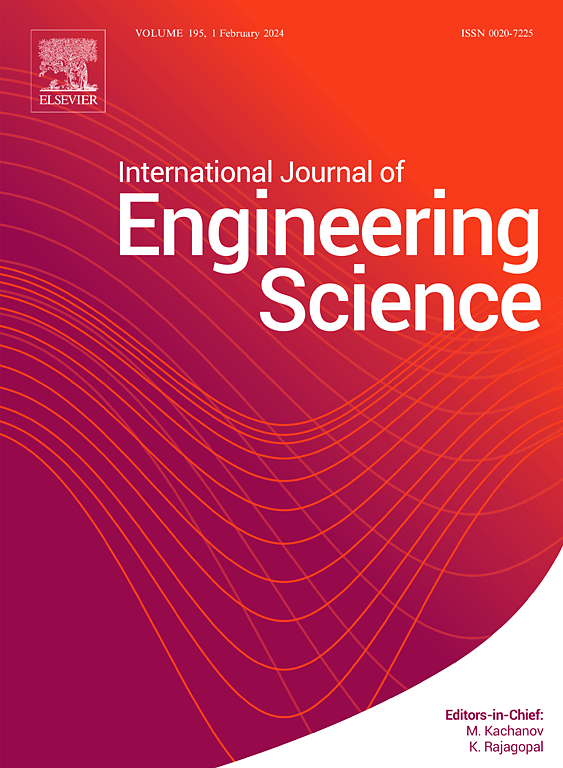传统打击乐器“Erbane”的实验与数值模态分析
IF 5.7
1区 工程技术
Q1 ENGINEERING, MULTIDISCIPLINARY
International Journal of Engineering Science
Pub Date : 2025-07-14
DOI:10.1016/j.ijengsci.2025.104351
引用次数: 0
摘要
采用实验和数值方法对中东传统打击乐器“Erbane”的动力和振动声学特性进行了研究。利用模态分析方法确定了该仪器的固有频率,并对所得到的固有频率建立的数值模型进行了验证。声学驱动结构分析验证了数值模型得到的模态振型。Erbane通过扬声器进行声学驱动,并用激光测振仪测量振动响应。这样,用激光测振仪精确确定的模态振型完成了数值模型的计算。本研究为更好地了解Erbane的振动特性提供了依据,并为今后使用打击乐器进行研究提供了契机。实验分析在0-800 Hz的频率范围内进行,数值模拟覆盖了1000 Hz,以确保全面的模态表征。这项研究首次将实验模态分析(EMA)和有限元建模(FEM)相结合应用于传统的Erbane鼓,为其振动行为提供了新的见解,并在模态频率偏差<; 8%的情况下验证了高达6阶模态。本文章由计算机程序翻译,如有差异,请以英文原文为准。
Experimental and numerical modal analysis of the traditional percussion instrument "Erbane"
This study investigated the dynamic and vibroacoustic behaviors of the traditional Middle Eastern percussion instrument "Erbane" using experimental and numerical methods. The natural frequencies of the instrument were determined by modal analysis method and the numerical model created with the obtained natural frequencies was verified. Acoustic-driven structural analysis was performed to verify the mode shapes obtained from the numerical model. Erbane was acoustically driven through a loudspeaker, and the vibration response was measured using a laser vibrometer. Thus, the numerical model results were completed with the mode shapes precisely determined by the laser vibrometer. This study provided a better understanding of the vibration behaviors of Erbane and provided an opportunity for future studies to be carried out with percussion instruments. The experimental analyses were performed within a frequency range of 0–800 Hz, and the numerical simulations covered up to 1000 Hz to ensure comprehensive modal characterization. This study is the first to apply combined Experimental Modal Analysis (EMA) and Finite Element Modeling (FEM) validation to the traditional Erbane drum, offering new insights into its vibrational behavior and validating up to the 6th mode with <8 % deviation in modal frequencies.
求助全文
通过发布文献求助,成功后即可免费获取论文全文。
去求助
来源期刊

International Journal of Engineering Science
工程技术-工程:综合
CiteScore
11.80
自引率
16.70%
发文量
86
审稿时长
45 days
期刊介绍:
The International Journal of Engineering Science is not limited to a specific aspect of science and engineering but is instead devoted to a wide range of subfields in the engineering sciences. While it encourages a broad spectrum of contribution in the engineering sciences, its core interest lies in issues concerning material modeling and response. Articles of interdisciplinary nature are particularly welcome.
The primary goal of the new editors is to maintain high quality of publications. There will be a commitment to expediting the time taken for the publication of the papers. The articles that are sent for reviews will have names of the authors deleted with a view towards enhancing the objectivity and fairness of the review process.
Articles that are devoted to the purely mathematical aspects without a discussion of the physical implications of the results or the consideration of specific examples are discouraged. Articles concerning material science should not be limited merely to a description and recording of observations but should contain theoretical or quantitative discussion of the results.
 求助内容:
求助内容: 应助结果提醒方式:
应助结果提醒方式:


